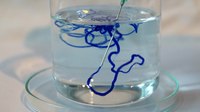
Photo from wikipedia
The United Nations General Assembly has declared 2019 to be the International Year of the Periodic Table of Chemical Elements. By so doing, they are promoting global awareness of how… Click to show full abstract
The United Nations General Assembly has declared 2019 to be the International Year of the Periodic Table of Chemical Elements. By so doing, they are promoting global awareness of how chemistry enables sustainable development and provides solutions to global challenges in energy, agriculture, health, and other critical sectors. The year 2019 is the 150th anniversary of the periodic table and also the 100th anniversary of the International Union of Pure and Applied Chemistry, the world authority on chemical nomenclature, standardized methods for measurement, maintainer of databases, endorser of conferences, and supporter and publisher of scientific research (IUPAC 2017). In celebration of this special year, SpringerNature, publisher of Cellulose, and other publishers were encouraged to focus on specific elements, or in a more general way, indicate the role of chemistry in sustainable development and solving global challenges, such as with a special issue that would showcase such research in our journal. Cellulose was first published in 1994, thus these United Nations and IUPAC initiatives fit perfectly with our already-planned 25th Anniversary Special Issue. As our part of the combined celebration, Cellulose is pointing out in this Editorial what is obvious to most of its regular readers and authors: as a central science underlying our multidisciplinary efforts, chemistry is providing solutions to global challenges by further developing knowledge of cellulose and other polysaccharides that will underpin future products as well as broadening and strengthening the already vital roles of these sustainable mainstays of our daily lives. Every issue of Cellulose furthers this quest. Simply put, plants use captured solar energy to convert carbon dioxide and water into cellulose. Estimates vary, but annual production, much of which is wild and not cultivated, is 18 to 70 9 10 billion tons (Puranen et al. 2014). A nearly equal amount decays each year. Forestry, especially eucalyptus, poplar, and pine trees, and cotton farming, are carried out explicitly to obtain the cellulose. In numerous other situations, however, concentrations of highcellulose material arise that are leftovers from processing agricultural materials such as sugarcane bagasse or empty oil palm fruit bunches. They await more profitable exploitation. Furthermore, plants and other organisms produce a panoply of polysaccharides, incredibly diverse in structure, properties, and function. Society makes some use of a few polysaccharides like starch, cellulose, and chitin, but there is vast room for improved utilization of these abundant, A. D. French (&) United States, Department of Agriculture, New Orleans, LA 70124, USA e-mail: [email protected]
Journal Title: Cellulose
Year Published: 2019
Link to full text (if available)
Share on Social Media: Sign Up to like & get
recommendations!